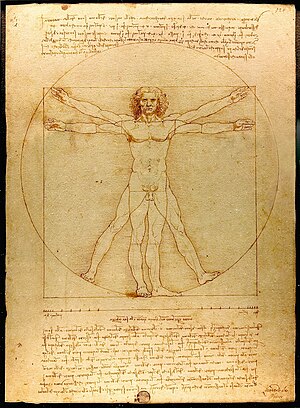The Building and Body - Leong Jiang Ling 1001436853
"Where does the SHAPE come from?"
To me, the shape could have come from the shape of a human body, this may be the form we can bring into the building. In other words, the relationship between the building and the human body are interconnected. The human body or the proportion grid can abundantly represent the design of a human body into a building, just like Le Corbusier said, "the Proportioning Grid is to serve as a basis for prefabrication..."
 |
| The Vitruvian Man by Leonardo da Vinci |
From the design of our building, the human body gives us a sense of proportion when constructing a building.
The Vitruvian Man is one of the proportions while constructing a building. The Vitruvian Man is a world-renowned drawing created by Leonardo da Vinci around the year 1487. The drawing depicts a nude male figure in two superimposed positions with his arms and legs apart and simultaneously inscribed in a circle and square.
I believe that the human body can be used in the architecture design as using its proportion stated. While using this human body, we can express our ideas more creatively.
As Vitruvius' writing wrote the body as a blueprint for architectural building especially on the idea of symmetry and proportions.
To best describe this kind of design, that is some building abundantly bring human body into the design.
 |
| Conceptual Mosque by Manço Architects |

This plain cube is to symbolize Muslims turn during prayer and illustrating the simplicity and humbleness.As Marcus Vitruvius said, "without symmetry and proportion there can be no principles in the design of any temple," and this building had its principle as a mosque and its proportion nicely fit the user.
 |
| Prefabricated steel structures |
Reference
Yungchang Yang, Geometry of the body, https://www.slideshare.net/YungchangYang/geometry-of-the-body
Manco Architects, http://www.manco.com.tr/English/ProjeDetay.aspx?pid=534
Manco Architects, manco architect: conceptual mosque,
https://www.designboom.com/architecture/manco-architects-conceptual-mosque/
Tose, Mosque Architecture and the Development of the Idea, 14 April 2017,
https://www.architectureadmirers.com/mosque-architecture-and-the-development-of-the-idea/
Le Corbusier, Excerpts From Le Modulor, First published in 1948, 219.
Marcus Vitruvius, Excerpts From The Ten Books, First published ca. 25 B.C.E. 215.
Lance Hosey, Hidden Lines: Gender, Race, And the Body, First published in 2001, 224.

Comments
Post a Comment